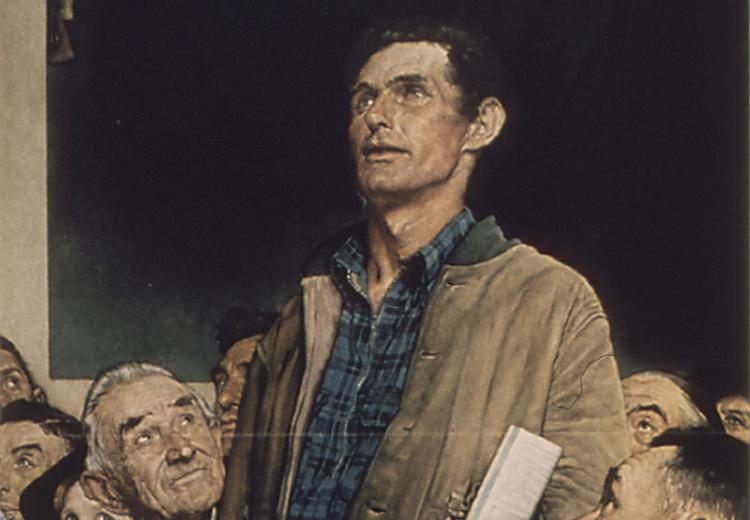Norman Rockwell, Freedom of Speech—Know It When You See It

Norman Rockwell (1894–1978), "Freedom of Speech", The Saturday Evening Post, February 20, 1943.
"Congress shall make no law respecting an establishment of religion, or prohibiting the free exercise thereof; or abridging the freedom of speech, or of the press; or the right of the people peaceably to assemble, and to petition the Government for a redress of grievances.”
—The Constitution of the United States, Amendment I
Do you recognize freedom of speech when you see or hear it? As the United States apprehensively approached World War II, President Franklin Roosevelt listed four American freedoms in his State of the Union address to Congress in 1941. In order to make these abstract ideas more widely understood and appreciated, Norman Rockwell illustrated how these freedoms appear in everyday American life. In this lesson, students learn to recognize freedom of speech within their community, state, country, and world. After examining Rockwell’s Freedom of Speech, they will report on a town meeting and create a collage featuring examples of free speech.
Guiding Questions
How does Norman Rockwell’s painting Freedom of Speech illustrate the American right of free speech?
How is the First Amendment evident in everyday local community life?
Learning Objectives
Explain how artist Norman Rockwell composed this painting to idealize the right of ordinary American citizens to speak their ideas without fear of censure
Identify the five freedoms in the First Amendment (religion, assembly, press, petition, and speech) and be able to give an example of each in daily/community life, state community, national community, and international community
